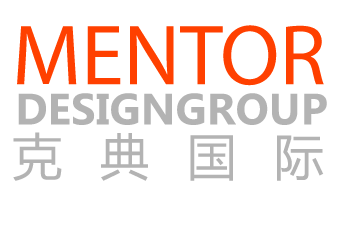

In the rapidly evolving landscape of online gaming, a stable internet connection is not just a convenience but a crucial component that directly influences player experience and game fairness. Whether engaging in competitive multiplayer battles, cooperative missions, or immersive single-player campaigns, connectivity issues can significantly alter gameplay dynamics. To understand how players can navigate these disruptions, it is essential to explore the broader implications of connection loss on game mechanics and the opportunities it presents. For a comprehensive overview, you can revisit the foundational insights in How Connection Loss Affects Game Mechanics and Opportunities.
Even during disconnections, players can utilize their knowledge of the game environment to prepare for re-entry or to anticipate opponent moves. For instance, in tactical shooters like Counter-Strike or Valorant, understanding map layouts and enemy spawn points allows players to predict enemy actions and position themselves advantageously once reconnected or during brief outages.
Short disconnections often occur during moments of high tension or critical decision points. Savvy players monitor the game flow and seize these windows to plan strategies, such as setting traps or repositioning, knowing that opponents might be momentarily distracted or uncertain.
Advanced players develop a sense of anticipation, relying on previous game patterns and timers. This skill allows them to make real-time decisions, like preemptively activating abilities or adjusting tactics during minor disconnections, especially in fast-paced games such as Fortnite or League of Legends.
Experiencing a disconnection can momentarily reduce stress, allowing players to reset mentally. This break can prevent frustration from escalating, especially during intense matches, fostering a more positive mindset upon reconnection.
Players should view disconnections as opportunities for strategic review rather than setbacks. Techniques like analyzing recent gameplay, reviewing tactical decisions, or even practicing game mechanics offline can maintain engagement and improve skills over time.
The pause provided by connection issues can be used for tactical analysis. For example, reviewing replays or consulting strategy guides helps players identify weaknesses and prepare better responses for future scenarios, turning interruptions into learning moments.
Disconnections can foster new forms of teamwork. For instance, in multiplayer games like Among Us or Rainbow Six Siege, players remaining connected can coordinate with disconnected teammates through external communication channels, developing adaptive strategies that capitalize on the situation.
Shared connectivity issues often lead to camaraderie, as players exchange experiences and support each other. This collective resilience strengthens community bonds and encourages collaborative problem-solving, which can be pivotal in competitive environments.
Platforms like Discord or in-game chat enable players to communicate during outages, transforming frustration into opportunities for social bonding. Such interactions can lead to shared learning, mentorship, and a more cohesive gaming community.
Some games implement systems that recognize players’ efforts despite connectivity issues. For example, Fortnite awards XP bonuses for strategic plays made before disconnection, incentivizing skillful engagement even during unstable connections.
Innovative mechanics include introducing “disconnection zones” where players can temporarily gain advantages or access special abilities. Such features turn unpredictable connectivity into a strategic element, as seen in certain custom game modes in Destiny 2.
Titles like Sea of Thieves incorporate reward systems that recognize players’ resilience during network instability, encouraging continued engagement regardless of connection quality. These design choices demonstrate how adaptability enhances overall player experience.
While leveraging disconnection opportunities can be strategic, developers must ensure that these do not lead to unfair advantages. For example, implementing timeout penalties or reconnection limits helps maintain fairness in competitive environments.
Measures such as disconnection detection algorithms, automatic rejoining protocols, and monitoring for suspicious activity are critical. These safeguards prevent players from intentionally disconnecting to gain unfair benefits, preserving game integrity.
Developers can embed adaptive systems that balance opportunity and fairness, such as dynamic matchmaking adjustments or real-time anti-cheat mechanisms, ensuring that all players compete on a level playing field despite connectivity issues.
Emerging AI technologies analyze connectivity data to anticipate disconnection patterns, enabling games to adapt dynamically. For example, predictive models can trigger preemptive strategies or suggest in-game actions to players during unstable periods.
Blockchain-based systems can record gameplay actions transparently, ensuring that any opportunities arising during disconnections are logged and verified, promoting fairness and accountability.
Future innovations may include AI-driven adaptive mechanics, decentralized decision-making, and real-time analytics that seamlessly integrate disconnection handling into gameplay, turning connectivity challenges into unique strategic layers.
By understanding and integrating these hidden opportunities, game developers can enhance overall fairness and engagement. Recognizing strategic moments during disconnections allows for a balanced approach that rewards skill without exploitation.
Designing adaptive yet fair systems ensures that all players have equal chances, regardless of connectivity issues. Transparency in these systems fosters trust and maintains competitive integrity.
As gaming technology advances, embracing these opportunities thoughtfully can lead to more resilient, engaging, and fair gaming environments. Developers should strive for solutions that turn connectivity challenges into strategic enhancements rather than vulnerabilities.
Recent Comments
Leave a comment